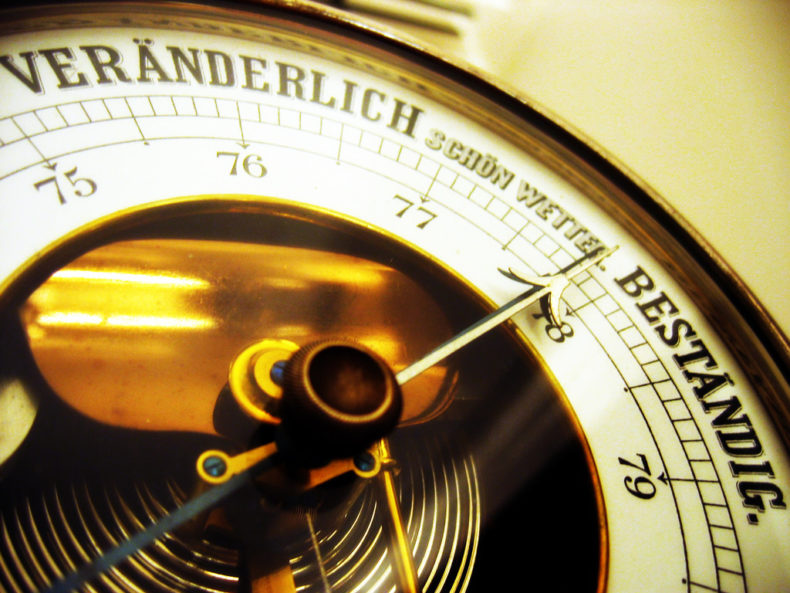 When Matt McCorkle was growing up in La Crosse, Wisconsin, his dad often listened to the automated broadcasts from the local NOAA weather station. “The soundscape of my childhood was that little weather robot,” McCorkle remembers. Now an audio engineer and sound designer, McCorkle has worked with musicians including John Legend and Laura Izibor, and was a founding member of the classical-music comedy collective CDZA. He still listens to the weather, however: his latest project, a web application called the Weather Machine, riffs on his childhood soundscape by turning weather data into sound.
When Matt McCorkle was growing up in La Crosse, Wisconsin, his dad often listened to the automated broadcasts from the local NOAA weather station. “The soundscape of my childhood was that little weather robot,” McCorkle remembers. Now an audio engineer and sound designer, McCorkle has worked with musicians including John Legend and Laura Izibor, and was a founding member of the classical-music comedy collective CDZA. He still listens to the weather, however: his latest project, a web application called the Weather Machine, riffs on his childhood soundscape by turning weather data into sound.
Starting with Dark Sky‘s daily or weekly forecast data for a location chosen by the user, the Weather Machine treats each weather variable like an instrument in a band. Temperature is translated into a tone whose pitch rises and falls with the mercury; humidity is represented by the “wobbliness” in the temperature tone. Atmospheric pressure is indicated by the sound of McCorkle’s own heartbeat, which speeds up and slows down as pressure increases and decreases. Wind speed and precipitation are represented by, well, the sounds of wind and rain, with a higher chance of precipitation indicated by less “choppiness” in the rain sound. For McCorkle, cloud-cover data were the most difficult to translate. “I would lie in fields and look up at the sky and think, ‘What does this sound like?'” he says. He eventually settled on a meditative tone that grows louder and deeper as the cloudiness in the forecast increases.
Unlike some data sonifications, the songs of the Weather Machine aren’t melodic, nor are they intended to be; they’re more like extended chords, sets of notes plucked from the cacophony of the global climate. But because almost every location on earth—your house, the Yucatan Peninsula, Abu Dhabi, Big Ben—has a particular forecast, every location has a particular chord. By listening to the differences, users can learn to hear their own forecasts faster than they can read them—and, in a sense, to “feel” forecasts from around the world. The Weather Machine can also sonify past weather data, and the results evoke the mood of climate change: thirty years of temperature data from a given day, time, and place often produce a jaggedly rising tone.
McCorkle wonders if such sonic representations of change can reach us at a deeper level than data visualizations such as Al Gore’s famous PowerPoints. He’s thinking about turning the Weather Machine into a mobile app, perhaps one with an alarm clock whose tone would signal the outlook for the day or week. He’s also working with the period-instrument ensemble New Vintage Baroque on a more elaborate sonification project, in which the band’s performances of Vivaldi’s Four Seasons concertos will vary with the climate history of each performance locale.
While classical arrangements are a long way from the monotone NOAA forecasts that McCorkle’s dad used to pick up on his Radio Shack Realistic, their essentials aren’t so different: No matter the instrument, the weather is still the soundtrack of our daily lives.
Top photo from Flickr user Markus Kalela. Creative Commons.